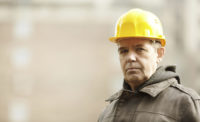The “skills gap”—the mismatch between the knowledge, skills, and abilities employers seek in potential employees and the competencies workers actually bring to the job—has been a topic of national conversation, concern, and even controversy for many years. Young people have often been at the center of these discussions. So, too, has the need to prepare new workers with “soft skills,” related to communication, problem solving and critical thinking, and collaboration (to name a few). Recent, national efforts to advance skills-based training and apprenticeship and employment opportunities for youth provide a timely opportunity to integrate knowledge and skills related to workplace safety and health into the soft skills delivered through workforce development programs and initiatives.
Young workers (15–24 years old) make up a small (roughly 13%) yet important component of the U.S. labor force. The benefits of paid work for young people are well known and include the opportunity to earn money, gain independence, and build self-confidence. So are the risks. Young workers require treatment in a hospital emergency department due to work-related injuries at about twice the rate of adult workers (age 25 and up). These incidents can have a lasting impact on quality of life and future workforce participation. A lack of adequate safety training may contribute to adverse health outcomes for young workers. Therefore, safety education and training may play an essential role in promoting the long-term health, well-being, and prosperity of our workforce and of our nation.
To address this important issue, the National Institute for Occupational Safety and Health (NIOSH) and the Board of Certified Safety Professionals (BCSP) Foundation recently entered into a five-year partnership to create and disseminate an online workplace safety and health training for youth. Once developed, it will be available free of charge for use in school CTE (career and technical education), STEM (science, technology, engineering, math), and apprenticeship programs. This new training will build on Youth@Work—Talking Safety, a foundational curriculum developed by NIOSH and its partners for middle school and high school students. This training will promote core competencies for workplace safety and health, such as identifying workplace hazards and methods to eliminate or control those hazards; demonstrating knowledge of young worker rights, responsibilities, and roles; and understanding how to communicate effectively about safety and health concerns at work. These competencies are portable to all jobs and sectors of the economy.
As part of the partnership, NIOSH and the BCSP Foundation will conduct outreach to raise awareness about young worker safety and health among educators, high school administrators and counselors, businesses, and labor and trade/professional organizations. These collaborative efforts will also leverage ongoing activities of NIOSH researchers and numerous partners and stakeholders, many of which we highlighted in this column.
For instance, NIOSH recently wrapped up a four-year study in the Miami-Dade County Public Schools (M-DCPS), the nation’s fourth largest school system. Approximately 7,500 eighth grade students received training on Talking Safety in their science classes. Preliminary results indicate positive, significant shifts (post-training) in eighth graders’ knowledge and attitude about workplace safety and health, and in their self-efficacy and reported intention to use the skills they learned through the curriculum training. The OSH competencies that young people learn early in life, before they enter the formal labor market, may serve as a critical foundation on which skills gained through on-the-job training, apprenticeships, and related programs will be built.
How to best prepare our workforce for the jobs of the future, and what skill sets workers need to be productive and competitive, is a national concern that requires large-scale and long-term strategies. How to keep current and future workers, our country’s most valuable resource, safe and healthy is a critical part of that conversation.


